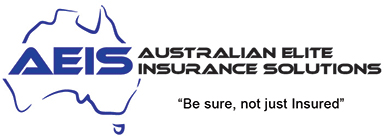Businesses are constantly changing and growing, so if your business is enjoying a growth spurt, congratulations.
But a changing business climate often means new insurance requirements.
Here’s what you need to do about your insurance cover to ensure your business has adequate ongoing protection. This will help reduce your risks of being over or underinsured. Keep in mind that research shows business growth is particularly risky for SMEs.
When to review your policy
Check your cover is fit-for-purpose when your business:
Grows, such as when you hire more staff, open branches/offices, market new lines of services or products. The same occurs when it significantly declines
Changes location, which may mean the new site has a different risk profile
Harnesses new technology, equipment, or innovations.
Review your policy at least annually, even if there haven’t been significant changes. A review also means we may be able to find better terms and conditions for you, as insurers’ offerings do wax and wane.
Consider getting in touch with us about your review at least four-to-six weeks before your renewal.
What does a review include?
We’ll review your cover by evaluating your risks and discussing how they could be minimised in the following ways. We’ll check:
Staffing numbers and wages, and factor in if some are still working remotely for you, all changes which are important to reflect in your workers’ compensation
Use of contractors, whether that has increased, stayed the same, or is less
Asset register including equipment, and machinery to list your purchases/replacements of vehicles, machinery, computing, furniture, etc.
Stock inventory to ascertain if you began exporting or held stock on your premises
Liability and professional indemnity to consider your company’s increased exposure through customer type, contract size, etc.
Turnover and insurable profit over the years to check if your business interruption cover is a good fit
Technology to ensure your cybersecurity approaches are updated.
For example, perhaps fewer employees worked at your business premises during the COVID shutdowns. You might have adjusted your insurance cover accordingly. If they’re back on site now, your policy needs updating.
We find it’s time-efficient for you if we send questionnaires to complete as well as meeting face-to-face. You might need to source property surveys, and we’ll need to discuss your risk profile with the insurers’ underwriters.
Document your risk profile & management processes
To make the review more seamless, consider documenting any changes to your business throughout the past 12 months as they happen. It will become a handy checklist.
As well, ensure you identify and address the key risks that operators in your industry commonly face, as well as the risk profile for your unique business. This evidence will hold you in good stead because insurers will be very particular about which risks they underwrite.
Of course, improving how you manage your business risks leads to fewer claims. That means you’ll have less downtime and your business can spend more time in full production.
Collaborate with us
It pays to have an insurance adviser by your side with deep insights and knowledge of your industry. By letting us know of your past and planned changes to assist in meeting your obligations to insurers under the policy, it means we can identify your key business risks and customise insurance cover to suit.
For the original post, visit OneAffiniti


Don’t forget, you can book a free half an hour appointment online with our director Kellie to discuss your current insurances or for any new businesses you may be looking at starting.
Click this link to book your free appt Book an appointment


Recent Comments